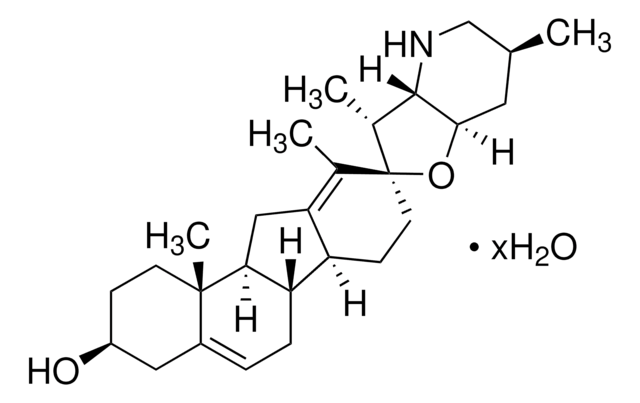R2650
Monoclonal Anti-Rac antibody produced in mouse
clone 23A8, purified immunoglobulin, buffered aqueous solution
About This Item
Produtos recomendados
fonte biológica
mouse
Nível de qualidade
conjugado
unconjugated
forma do anticorpo
purified immunoglobulin
tipo de produto de anticorpo
primary antibodies
clone
23A8, monoclonal
Formulário
buffered aqueous solution
peso molecular
antigen 21 kDa
reatividade de espécies
rat, human, mouse
técnica(s)
immunohistochemistry (frozen sections): suitable
immunoprecipitation (IP): suitable
western blot: 0.5-2.0 μg/mL using rat brain microsomal protein preparation
Isotipo
IgG
nº de adesão UniProt
Condições de expedição
dry ice
temperatura de armazenamento
−20°C
modificação pós-traducional do alvo
unmodified
Informações sobre genes
human ... ARHGEF6(9459)
mouse ... Arhgef6(73341)
rat ... Arhgef6(363509)
Especificidade
Imunogênio
forma física
Nota de preparo
Exoneração de responsabilidade
Não está encontrando o produto certo?
Experimente o nosso Ferramenta de seleção de produtos.
Código de classe de armazenamento
10 - Combustible liquids
Classe de risco de água (WGK)
WGK 1
Ponto de fulgor (°F)
Not applicable
Ponto de fulgor (°C)
Not applicable
Escolha uma das versões mais recentes:
Já possui este produto?
Encontre a documentação dos produtos que você adquiriu recentemente na biblioteca de documentos.
Nossa equipe de cientistas tem experiência em todas as áreas de pesquisa, incluindo Life Sciences, ciência de materiais, síntese química, cromatografia, química analítica e muitas outras.
Entre em contato com a assistência técnica




